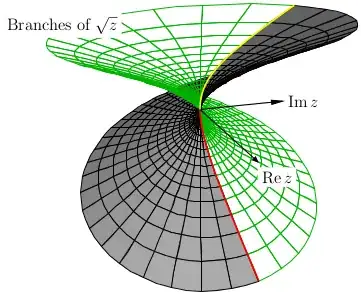Mathematicians are often pedantic--"What do you mean by $\sqrt{\phantom{x}}$?" "What are the domain and target of this function?"--but the question "How to express (solutions of) $\sqrt{x} = -1$?" is a prime example of the need to be grindingly specific about the meaning of symbols.
As user46944 and Alizter point out, if $x$ is real and non-negative, then "$\sqrt{x}$" conventionally refers to the unique non-negative square root of $x$. That is, $\sqrt{\phantom{x}}:[0, \infty) \to [0, \infty)$ is a function.
With this understanding, the equation $\sqrt{x} = -1$ has no (real, non-negative) solution, even though squaring both sides yields the equation $x = (\sqrt{x})^{2} = (-1)^{2} = 1$, which has $x = 1$ as a solution. (Incidentally, in this setting, the equation "$(\sqrt{x})^{2} = x$ only makes sense for non-negative real $x$.)
What if we want to take complex square roots? Numerous questions at Math.SE address this; the following is taken verbatim from an answer to this question:
If by the radical symbol you mean the set-valued function that associates to each non-zero complex number $w$ the two complex numbers $z$ satisfying $w = z^{2}$, and if "squaring a set $A$" means "the set obtained by squaring each element of $A$", then for each complex $z$,
$\sqrt{z^{2}} = \{\pm z\}$ by the difference of squares identity: For complex numbers $z_{1}$ and $z_{2}$, you have $z_{1}^{2} = z_{2}^{2}$ if and only if $z_{1} = \pm z_{2}$.
$(\sqrt{z})^{2} = \{z\}$ from the definitions of $\sqrt{\phantom{z}}$ and squaring a set.
In this setting, "$\sqrt{x} = -1$" still has no solution (there is no complex number whose unique square root is $-1$), but we do have $\sqrt{1} = \{-1, 1\}$.
But perhaps allowing multi-valued square roots feels like cheating. Unfortunately, matters become problematic if we require a (single-valued) square root function. The essential problem is topological, not algebraic: Every non-zero complex number has precisely two complex square roots, differing by a sign, and there is no "continuous choice of square root".
More formally, there does not exist a continuous, complex-valued function $\sqrt{\phantom{z}}$ defined on the set of non-zero complex numbers and satisfying $(\sqrt{z})^{2} = z$ for all non-zero $z$.
The diagram below explains why: If we start with the non-negative real square root on the non-negative real axis, then attempt to extend by continuity (the gray shaded surface), we "arrive at the negative square root" after one traversal of a circle around the origin.

(The entirety of the diagram, the solid gray sheet together with the green mesh, may be viewed as the real part of the "set-valued" square root described above.)
Unlike the situation for square roots of non-negative real numbers (where the "natural" domain was the set $[0, \infty)$ of non-negative reals), there is no natural domain for a continuous complex square root function. Often one removes the non-positive reals; sometimes removing the negative imaginaries (and zero) is preferable.
Further, if $\sqrt{\phantom{z}}$ denotes an arbitrary continuous branch of the complex square root, the equation "$\sqrt{ab} = \sqrt{a} \cdot \sqrt{b}$" fails to hold for some $a$ and $b$. Bother.
Though one can make a case that "$z = 1$ is a solution of $\sqrt{z} = -1$" (by choosing a branch of square root that takes the value $-1$ at $z = 1$!), that's asking for trouble. When people see a radical sign signifying a square root, one of the first expectations is that the value is non-negative if the radicand is a non-negative real number.

So the equation can't have a solution.
– Kitegi Apr 02 '15 at 11:43